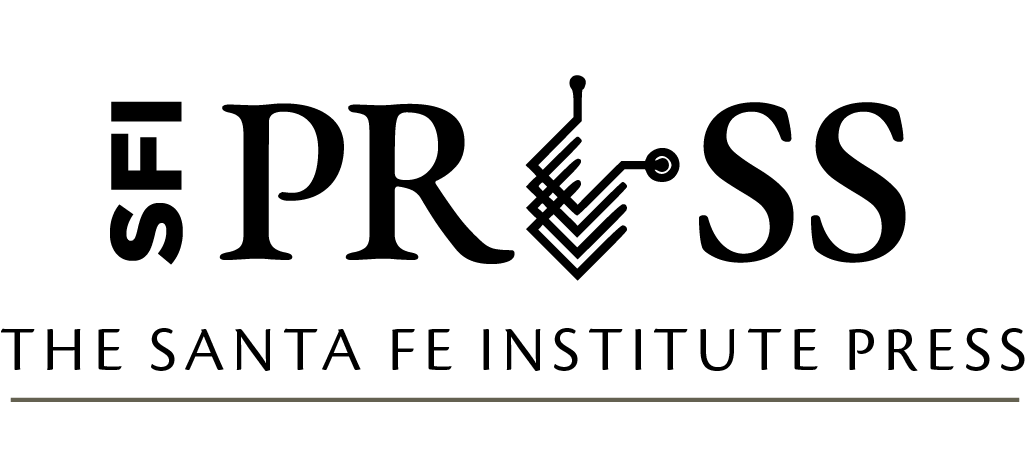68-perelson-1989
Foundational Papers in Complexity Science pp. 2097–2141
DOI: 10.37911/9781947864559.68
Immune Network Theory: A Retrospective
Author: Rob J. de Boer, Utrecht University
Excerpt
The immune system is a distributed complex adaptive system that makes decisions on a daily basis about how to respond to intruders, to commensals, and to itself. These decisions are typically remembered for life. Lifelong immunity typically protects us from a large variety of pathogens in our environment. The absence of immunity to the commensal bacteria in our microbiomes is essential for our physiological health, and the absence of immunity to our own tissues prevents us from suffering from autoimmune disease. These “cognitive” properties of deciding and remembering are typically attributed to the adaptive immune system, that is, the lymphocytes, which are circulating white blood cells, expressing a randomly made receptor, with which they can potentially bind proteins that they encounter while patroling the body. The proteins (or peptides) that lymphocytes bind to with high affinity are called antigens (or epitopes), and lymphocytes tend to be “specific” for a particular antigen because their random receptor only binds to a very small fraction (typically 1 : 105 to 1 : 106) of the proteins in their environment. Lymphocytes specifically binding to a novel antigen—that is, those involved in a high-affinity interaction—trigger a process of cell division and differentiation, and expand into a large clone of “effector cells,” all expressing the same receptor. This process is called “clonal expansion.” Together these effector cells are capable of binding and clearing the antigen.
Bibliography
Arthur, J. M., J. C. Forrest, K. W. Boehme, J. L. Kennedy, S. Owens, C. Herzog, J. Liu, and T. O. Harville. 2021. “Development of ACE2 Autoantibodies after SARS-CoV-2 Infection.” PLOS One, https://doi.org/10.1371/journal.pone.0257016j.
Borghans, J. A. M., and R. J. De Boer. 2002. “Memorizing Innate Instructions Requires a Sufficiently Specific Adaptive Immune System.” International Immunology 14:525–32. https://doi.org/10.1093/intimm/14.5.525.
Chao, A., and J. Bunge. 2002. “Estimating the Number of Species in a Stochastic Abundance Model.” Biometrics 58 (3): 531–539. https://doi.org/10.1111/j.0006-341X.2002.00531.x.
Chao, D. L., M. P. Davenport, S. Forrest, and A. S. Perelson. 2004. “A Stochastic Model of Cytotoxic T Cell Responses.” Journal of Theoretical Biology 228:227–40. https://doi.org/10.1016/j.jtbi.2003.12.011.
Cohen, I. R. 1986. “Regulation of Autoimmune Disease Physiological and Therapeutic.” Immunological Reviews 94:5–21. https://doi.org/10.1111/j.1600-065x.1986.tb01161.x.
De Boer, R. J. 1989. In Theories of Immune Networks, edited by H. Atlan and I. Cohen. Berlin, Germany: Springer-Verlag.
De Boer, R. J., and A. S. Perelson. 1993. “How Diverse Should the Immune System Be?” Proceedings of the Royal Society B: Biological Sciences 252:171–75. https://doi.org/10.1098/rspb.1993.0062.
Detours, V., R. Mehr, and A. S. Perelson. 2000. “Deriving Quantitative Constraints on T Cell Selection from Data on the Mature T Cell Repertoire.” Journal of Immunology 164:121–8. https://doi.org/10.4049/jimmunol.164.1.121.
Eichmann, K. 2008. The Network Collective: Rise and Fall of a Scientific Paradigm. Basel, Switzerland: Birkhauser.
Farmer, J., N. H. Packard, and A. S. Perelson. 1986. “The Immune System, Adaptation, and Machine Learning.” Physica D: Nonlinear Phenomena 22:187–204. https://doi.org/10.1016/0167-2789(86)90240-X.
Giorgetti, O. B., P. Shingate, C. P. O’Meara, V. Ravi, N. E. Pillai, B.-H. Tay, A. Prasad, et al. 2021. “Antigen Receptor Repertoires of One of the Smallest Known Vertebrates.” Science Advances 7 (1). https://doi.org/10.1126/sciadv.abd8180.
Janeway, Jr., C. A. 1989. “Approaching the Asymptote? Evolution and Revolution in Immunology.” Cold Spring Harbor Symposia on Quantitative Biology 54:1–13. https://doi.org/10.1101/sqb.1989.054.01.003.
Jerne, N. K. 1974. “Towards a Network Theory of the Immune System.” Annals of Allergy, Asthma & Immunology (Paris, France) 125:373–89.
Macken, C. A., and A. S. Perelson. 1989. “Protein Evolution on Rugged Landscapes.” Proceedings of the National Academy of Sciences 86 (16):6191–5. https://doi.org/10.1073/pnas.86.16.6191.
Murphy, W. J., and D. L. Longo. 2022. “A Possible Role for Anti-Idiotype Antibodies in SARS-CoV-2 Infection and Vaccination.” The New England Journal of Medicine 386:394–6. https://doi.org/10.1056/NEJMcibr2113694.
Parisi, G. 1990. “A Simple Model for the Immune Network.” Proceedings of the National Academy of Sciences 87:429–33. https://doi.org/10.1073/pnas.87.1.429.
Perelson, A. S. 1989. “Immune Network Theory.” Immunological Reviews 110:5–36. https://doi.org/10.1111/j.1600-065x.1989.tb00025.x.
Perelson, A. S., and C. DeLisi. 1980. “Receptor Clustering on a Cell Surface. I. Theory of Receptor Cross- Linking by Ligands Bearing Two Chemically Identical Functional Groups.” Mathematical Biosciences 48:71–110. https://doi.org/10.1016/0025-5564(80)90017-6.
Perelson, A. S., and G. F. Oster. 1979. “Theoretical Studies of Clonal Selection: Minimal Antibody Repertoire Size and Reliability of Self–Non-Self Discrimination.” Journal of Theoretical Biology 81:645–70. https://doi.org/10.1016/0022-5193(79)90275-3.
Qi, Q., Y. Liu, and Y. Cheng. 2014. “Diversity and Clonal Selection in the Human T-Cell Repertoire.” Proceedings of the National Academy of Sciences 111:13139–44. https://doi.org/10.1073/pnas.1409155111.
Segel, L. A., and A. S. Perelson. 1988. “Computations in Shape Space: A New Approach to Immune Network Theory.” Edited by A. S. Perelson. (Reading, MA) II:321–343.
Sulzer, B., R. J. De Boer, and A. S. Perelson. 1996. “Cross-Linking Reconsidered: Binding and Cross-Linking Fields and the Cellular Response.” Biophysical Journal 70:1154–68. https://doi.org/10.1016/S0006- 3495(96)79676-5.
Takeuchi, O., and S. Akira. 2010. “Pattern Recognition Receptors and Inflammation.” Cell 140:805–20. https://doi.org/10.1016/j.cell.2010.01.022.
Weisbuch, G., R. J. De Boer, and A. S. Perelson. 1990. “Localized Memories in Idiotypic Networks.” Journal of Theoretical Biology 146:483–499. https://doi.org/10.1016/s0022-5193(05)80374-1.
Wortel, I. M. N., C. Kesmir, R. J. De Boer, Mandl J. N., and J. Textor. 2020. “Is T Cell Negative Selection a Learning Algorithm?” Cells 9:690. https://doi.org/10.3390/cells9030690.
